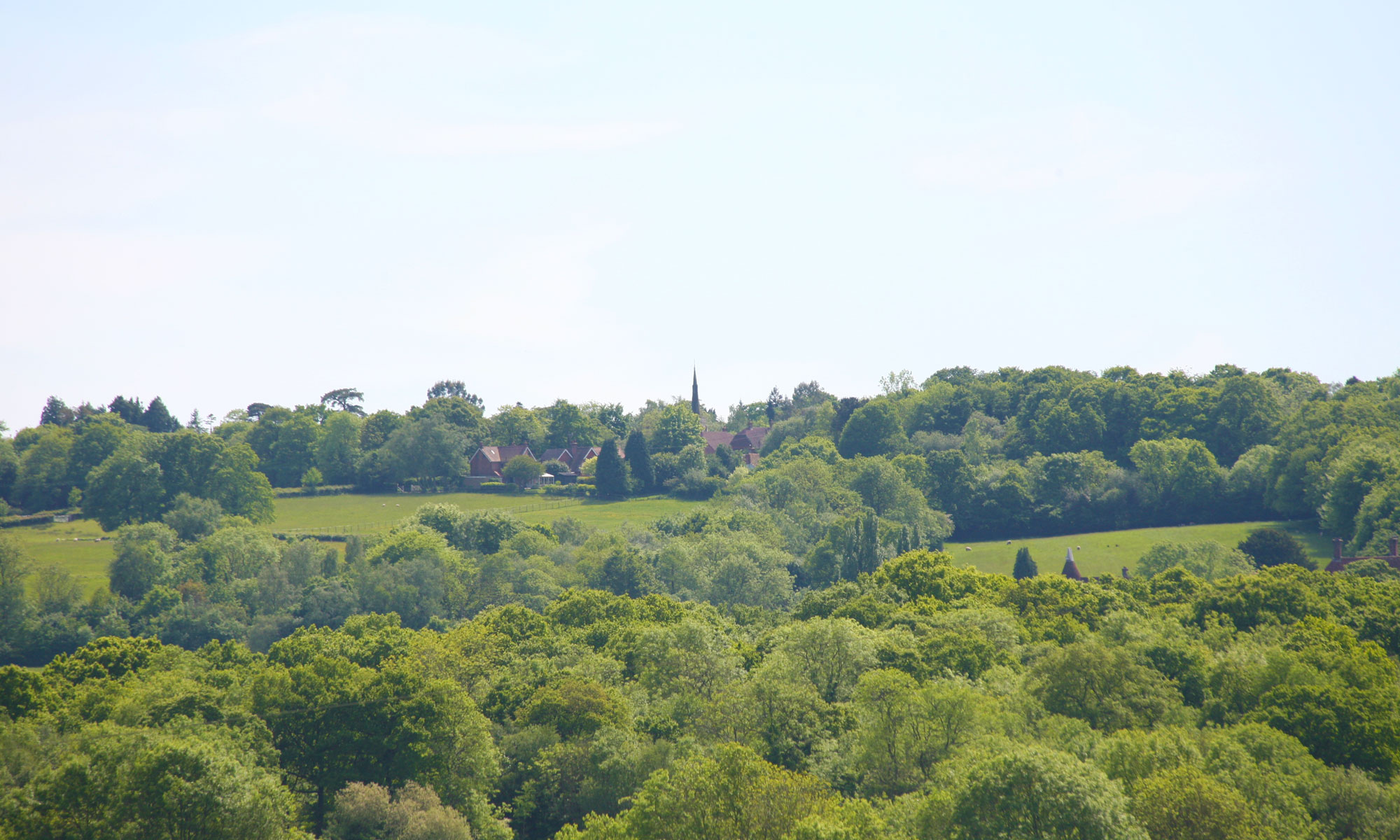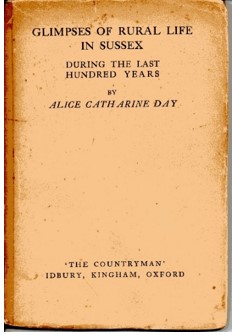 Alice Catharine Day was born in 1848 to William Day (1787 – 1849) and Anne Elliot Le Blanc (1806 – 1896) of Hadlow House in Hadlow Down which was then a part of the parish of Mayfield. She was baptized in St. Marks Church, Hadlow Down on the 26th. September 1848. Her father within a year of her being born.
Alice Catharine Day was born in 1848 to William Day (1787 – 1849) and Anne Elliot Le Blanc (1806 – 1896) of Hadlow House in Hadlow Down which was then a part of the parish of Mayfield. She was baptized in St. Marks Church, Hadlow Down on the 26th. September 1848. Her father within a year of her being born.
*Please note that throughout this article the writer has purposely used Miss Day’s correct spelling of her name Catharine spelt with an ‘a’ and not with an ‘e’.
Many Hadlow Down villagers know of Miss Day due to the reproduction of her book Glimpses of Life in Rural Sussex During The Last Hundred Years, which was first published in 1927, in the Millenium village book project of 1999. In one of her ‘glimpses’ she recalls visiting a village family in 1883, there are other dates of interviews with villagers including one in 1922 In her book she says she is ‘writing principally of my experiences among them [The Wealden People] during the years from 1874 till 1892’, as the book was published in 1927 a few years before her death at the age of 82, when compiling her book she was no doubt drawing on lots of notes made throughout her time living in Hadlow Down as well as her personal recollections as a young lady.
Alice was not only a keen writer and important social historian but an article in a British Museum Bulletin refers to a work called ‘Old Yew Tree in Waghorn’s Farm, Hadlow Down, Sussex’ which was painted by Alice and presented to the father of Elisabeth Crossland who was staying in the New Inn. An artistic streak seems to have run in the family with her grandfather William Day (1764 – 1807) being described as a ‘highly accomplished’ & ‘somewhat neglected’ English watercolourist.The Day family were a land-owning Sussex family whose association with Hadlow Down can be dated back to at least 1590 with the birth of Bishop Thomas Day and according to Alice, the family estate when she was born comprised some two thousand acres around Mayfield, Hadlow Down, Rotherfield and Framfield with about forty tenant farmers. After the death of Alice’s father, according to the 1851 census, the family were still living in Hadlow House, Alice’s mother is recorded as being the proprietor of Hadlow House, head of the household, widowed and employing 22 people. William’s will is quite difficult to read and make out but it would seem that Anne, his wife was gifted an annuity while the principal beneficiary of the estate and house is presumed to be his eldest son William Ansell Day (1826 – 1886) records show that he was living in Hadlow House in 1856 but in 1858 his brother Francis Day (1829 – 1889) began litigation for the estate in Chancery. The case was resolved in 1860, with court ordering that Hadlow House be sold.
The Village Trust are planning separate articles on Hadlow House, the Estate and the Day family for the future.On 4th September 1855 Alice’s mother Anne Day, re-married at St. Mark’s in Hadlow Down to Richard Bramwel, a surgeon from the Isle of Wight, Anne with her new husband and Alice moved to Cambridge Road, Brighton where she is recorded in the 1861 census. By 1871 they had moved to Montpelier Road, Brighton and then in 1881 Alice is recorded as a ‘lady of independent means’ living as a boarder in Park Crescent, Brighton. Alice herself tells of much of her childhood being spent in Brighton.
Her stepfather died in 1878 and her mother is recorded in 1881 and 1891 as living in ‘West Hadlow’, Hadlow Down.
In one of her ‘glimpses’ Alice recalls visiting a village family in 1883 and notes dates of other interviews with villagers including one in 1922 although she says that she is writing principally of “my experiences among them [Wealden People] during the years from 1874 till 1892”
In October 1890 a pamphlet entitled ‘Trip on Board the Bishop of Algoma’s Yacht “The Evangeline” by Miss Alice Catharine Day was published by the Colonial and Continental Church Society. Alice had gone to Canada as a Missionary Society Secretary, sometime between 1881 and 1888 living in a house in Algoma Diocese interestingly called ‘West Hadlow’ the name of an earlier home of her and her mother believed to be in Hadlow Down near ‘Hyders’. While there she met and married her husband W M Ausin Anderson. In the book ‘Pioneer Work in Algoma’ by Eda Green published in 1915 the author mentions Captain Anderson, a Government Agent working to improve the lot of the Ottahwahs and Ojibways, two tribes of the Algonquin native Americans (‘Indians’ as they are referred to throughout t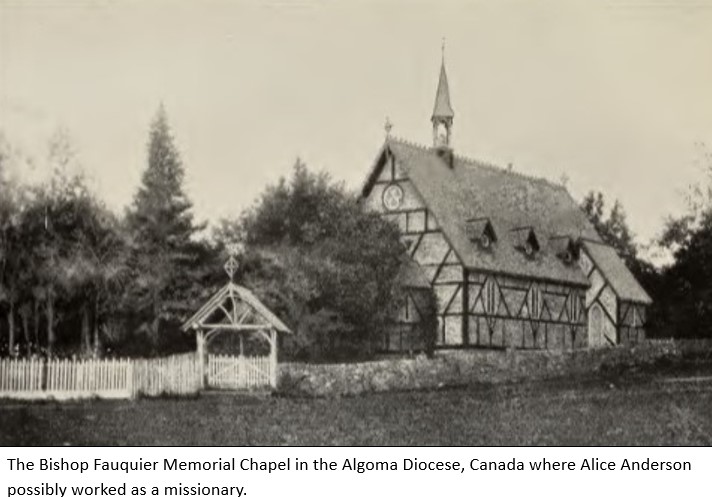 he publication.) by a re-location experiment started in 1836. This date would seem to rule out the ‘Captain’ from being Alice’s husband but considering the limited number of people who would be involved in the missionary work at the settlement it seems probable that W M Ausin Anderson was a close relative if not his son. The coincidence of him being from a different family are highly unlikely.
he publication.) by a re-location experiment started in 1836. This date would seem to rule out the ‘Captain’ from being Alice’s husband but considering the limited number of people who would be involved in the missionary work at the settlement it seems probable that W M Ausin Anderson was a close relative if not his son. The coincidence of him being from a different family are highly unlikely.
Glimpses of Rural Life in Sussex During The Last Hundred Years is an extremely important social history source which tells of very local customs and life. The wearing of and description of clothing including ‘soft hats,’ ‘corduroy trousers’ and especially the ‘Sussex Smock’ is extremely interesting and enlightening as is the description of some ‘Hadlow Down’ food specialities such as ‘Brown George Turnovers,’ ‘Partridge Pudding’ and ‘Flead Cake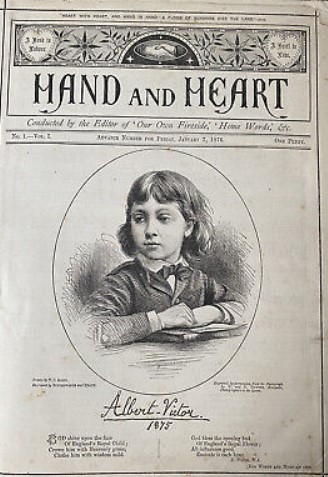 s.’ Alice Day stresses that the most notable thing about the village and the times was the friendliness and neighbourliness of the community. In accumulating her collection of anecdotes Alice says she visited 120 homes. Venturing wider than the village proper she took to selling subscriptions for the magazine Hand and Heart to introduce herself and start conversations with new acquaintances.
s.’ Alice Day stresses that the most notable thing about the village and the times was the friendliness and neighbourliness of the community. In accumulating her collection of anecdotes Alice says she visited 120 homes. Venturing wider than the village proper she took to selling subscriptions for the magazine Hand and Heart to introduce herself and start conversations with new acquaintances.
The Sussex Agricultural Express dated 24th. December 1930 published Alice’s obituary recording her death aged 82. She is described as a ‘Well known writer’ and noting her work in Canada and her meeting with and marriage to her husband saying that they returned to Rotherfield in 1920. In 1894 Alice is recorded as living in Rotherfield, so it is presumed she had returned from Canada earlier before making at least one other trip back again.
Alice’s mother Anne died in 1896 whilst resident in the Manor House Rotherfield and is buried at St. Denys Church.
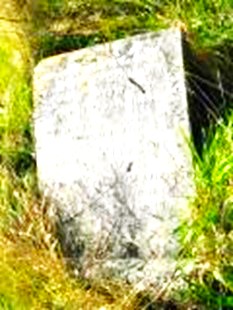 The Sevenoaks Chronicle reports that Alice died on the 17th. December 1930 in Rotherfield and left a total of £3,657 with various bequests including £35 in trust for the upkeep of family graves in Hadlow Down. She is buried in St Dunstans Church, Mayfield in the same grave as her brother William Ansell Day and grand-nephew Harold Francis Day
The Sevenoaks Chronicle reports that Alice died on the 17th. December 1930 in Rotherfield and left a total of £3,657 with various bequests including £35 in trust for the upkeep of family graves in Hadlow Down. She is buried in St Dunstans Church, Mayfield in the same grave as her brother William Ansell Day and grand-nephew Harold Francis Day
Kent & Sussex Courier, dated 26.12.1930 in a report of her funeral describes her as a ‘Local Historian’ and that she ‘Taught at Bible Classes’
